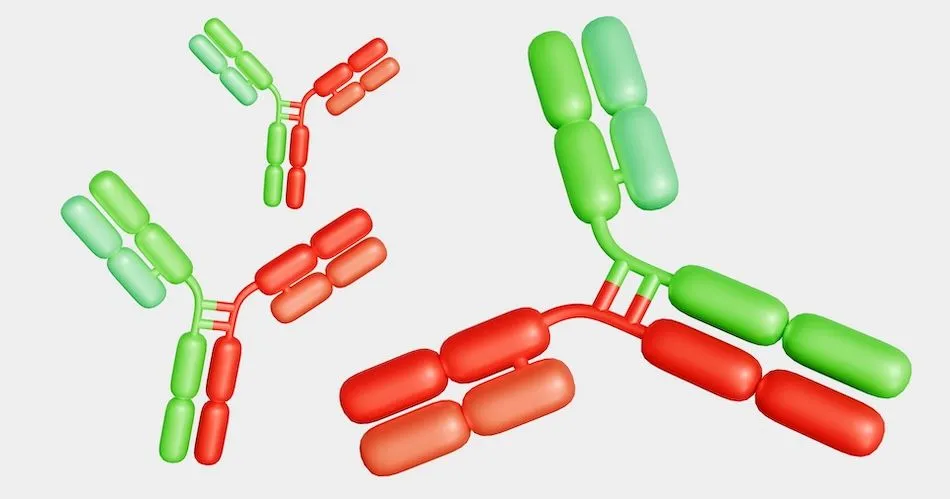Mindfulness for DLBCL Patients: Thought Defusion

Practice the mindfulness technique of thought defusion to detach from harmful thought patterns, reducing their impact. This detachment helps you obtain greater mental flexibility and reduced stress.
“Regularly practicing thought defusion has been shown to decrease an individual’s believability of their negative thoughts, increase their overall comfort and willingness to have the negative thought, and increase their mood overall” Andreas Larsson.
Are You Overwhelmed by DLBCL?
DLBCL patients and their caregivers may feel overwhelmed by the onset of a DLBCL diagnosis. From navigating which treatment to choose, managing the side effects of the disease, and finding relief from the cancer’s financial burden, these issues may lead many to feel anxious and depressed. It is our goal at HealthTree to support you with resources that can help alleviate the burden of this disease, including those related to mental health.
Apart from you speaking with a licensed mental health counselor who is the expert in navigating your personal situation to help you feel better mentally, we are happy to share general techniques that mental health specialists recommend to support you in improving your emotional health.
What is Mindfulness?
Mindfulness refers to various therapist-recommended techniques that help you observe your own thoughts and feelings in the present moment without being overwhelmed by them. Practicing mindfulness can help you improve your mental well-being and reduce stress.
The specific mindfulness technique discussed in this article is called thought defusion.
What is Thought Defusion?
“The goal of thought defusion is to create space between ourselves and our thoughts. When we are overly reactive or attached to our negative thoughts, we typically experience mental and/or emotional discomfort and unnecessary suffering” Andreas Larsson.
Thought defusion is a core component of Acceptance and Commitment Therapy (ACT), a form of cognitive-behavioral therapy that encourages individuals to accept their thoughts and feelings rather than fighting or feeling overwhelmed by them.
Thought defusion involves a shift in how one relates to their thoughts, moving from a stance of literal acceptance to one of detached observation. Instead of identifying with every thought or seeing them as absolute truths, the practice teaches individuals to see thoughts as mere mental events that pass through the mind. This process helps in reducing the impact and influence of negative or unhelpful thoughts on one’s emotional state and behaviors.
“Creating space between ourselves and our negative thoughts can decrease the emotional discomfort associated with these thoughts as well as increase the willingness to be exposed to these thoughts” Hilary-Anne Healy.
The Steps of Thought Defusion
- Notice the thought: Begin by becoming aware of your thoughts. Pay attention to when a particular thought arises without immediately reacting to it.
- Acknowledge the thought: Acknowledge that the thought is present. Label it as a thought by saying to yourself, “I’m having the thought that…”
- Create distance: Introduce distance between yourself and the thought. You might visualize the thought as words on a cloud moving away.
- Observe without judgment: Observe the thought without attaching any judgment or emotional weight to it. Recognize that it’s just a thought, nothing more.
- Return to the present moment: Gently bring your focus back to the present moment.
An Example of Practicing Thought Defusion as a DLBCL Patient
- Notice the thought: I am waiting for my test results to come back, and I feel anxious about what they will say.
- Acknowledge the thought: I’m having the thought that I feel anxious about upcoming test results.
- Create distance: I’m picturing clouds in my mind. I’m putting the thought “Anxious about test results” onto a cloud far away. I’m picturing the cloud moving farther and farther away until I no longer see that cloud and it has disappeared.
- Observe without judgment: Although I’m having the thought about being anxious about test results, this is just a thought. I don’t need to let its reactivity ruin me.
- Return to the present moment: I’m done focusing on the thought defusion exercise, and I’m bringing my attention to what is going on around me in the present.
In conclusion, practicing thought defusion can support you by creating a space between you and your negative thoughts. This, in turn, can help reduce emotional discomfort and unnecessary suffering associated with those thoughts.
Practice the mindfulness technique of thought defusion to detach from harmful thought patterns, reducing their impact. This detachment helps you obtain greater mental flexibility and reduced stress.
“Regularly practicing thought defusion has been shown to decrease an individual’s believability of their negative thoughts, increase their overall comfort and willingness to have the negative thought, and increase their mood overall” Andreas Larsson.
Are You Overwhelmed by DLBCL?
DLBCL patients and their caregivers may feel overwhelmed by the onset of a DLBCL diagnosis. From navigating which treatment to choose, managing the side effects of the disease, and finding relief from the cancer’s financial burden, these issues may lead many to feel anxious and depressed. It is our goal at HealthTree to support you with resources that can help alleviate the burden of this disease, including those related to mental health.
Apart from you speaking with a licensed mental health counselor who is the expert in navigating your personal situation to help you feel better mentally, we are happy to share general techniques that mental health specialists recommend to support you in improving your emotional health.
What is Mindfulness?
Mindfulness refers to various therapist-recommended techniques that help you observe your own thoughts and feelings in the present moment without being overwhelmed by them. Practicing mindfulness can help you improve your mental well-being and reduce stress.
The specific mindfulness technique discussed in this article is called thought defusion.
What is Thought Defusion?
“The goal of thought defusion is to create space between ourselves and our thoughts. When we are overly reactive or attached to our negative thoughts, we typically experience mental and/or emotional discomfort and unnecessary suffering” Andreas Larsson.
Thought defusion is a core component of Acceptance and Commitment Therapy (ACT), a form of cognitive-behavioral therapy that encourages individuals to accept their thoughts and feelings rather than fighting or feeling overwhelmed by them.
Thought defusion involves a shift in how one relates to their thoughts, moving from a stance of literal acceptance to one of detached observation. Instead of identifying with every thought or seeing them as absolute truths, the practice teaches individuals to see thoughts as mere mental events that pass through the mind. This process helps in reducing the impact and influence of negative or unhelpful thoughts on one’s emotional state and behaviors.
“Creating space between ourselves and our negative thoughts can decrease the emotional discomfort associated with these thoughts as well as increase the willingness to be exposed to these thoughts” Hilary-Anne Healy.
The Steps of Thought Defusion
- Notice the thought: Begin by becoming aware of your thoughts. Pay attention to when a particular thought arises without immediately reacting to it.
- Acknowledge the thought: Acknowledge that the thought is present. Label it as a thought by saying to yourself, “I’m having the thought that…”
- Create distance: Introduce distance between yourself and the thought. You might visualize the thought as words on a cloud moving away.
- Observe without judgment: Observe the thought without attaching any judgment or emotional weight to it. Recognize that it’s just a thought, nothing more.
- Return to the present moment: Gently bring your focus back to the present moment.
An Example of Practicing Thought Defusion as a DLBCL Patient
- Notice the thought: I am waiting for my test results to come back, and I feel anxious about what they will say.
- Acknowledge the thought: I’m having the thought that I feel anxious about upcoming test results.
- Create distance: I’m picturing clouds in my mind. I’m putting the thought “Anxious about test results” onto a cloud far away. I’m picturing the cloud moving farther and farther away until I no longer see that cloud and it has disappeared.
- Observe without judgment: Although I’m having the thought about being anxious about test results, this is just a thought. I don’t need to let its reactivity ruin me.
- Return to the present moment: I’m done focusing on the thought defusion exercise, and I’m bringing my attention to what is going on around me in the present.
In conclusion, practicing thought defusion can support you by creating a space between you and your negative thoughts. This, in turn, can help reduce emotional discomfort and unnecessary suffering associated with those thoughts.

about the author
Megan Heaps
Megan joined HealthTree in 2022. She enjoys helping patients and their care partners understand the various aspects of the cancer. This understanding enables them to better advocate for themselves and improve their treatment outcomes.
More on Navigating Your Health
Get the Latest Large B Cell Lymphoma Updates, Delivered to You.
By subscribing to the HealthTree newsletter, you'll receive the latest research, treatment updates, and expert insights to help you navigate your health.













